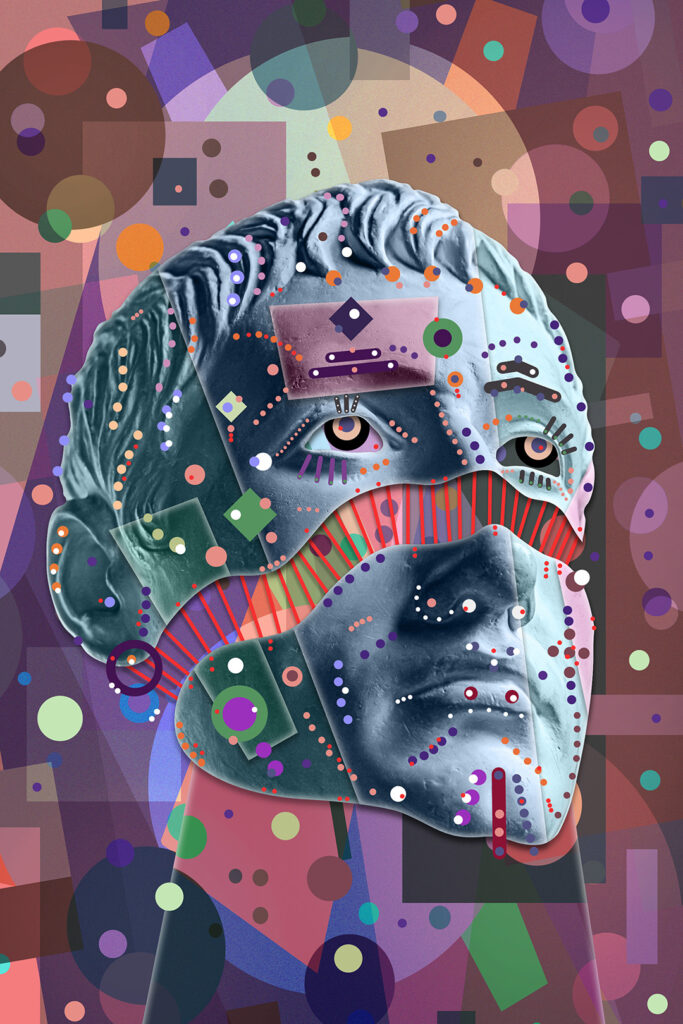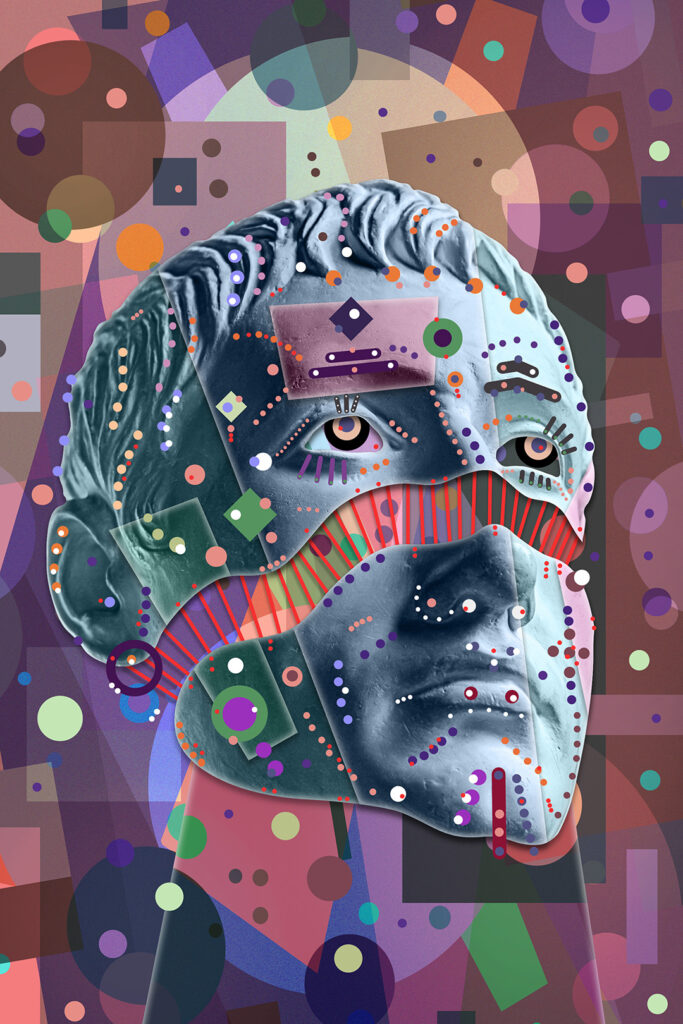
31
May
Digital Art & NFTs are Redefining ‘Real’
As conversations about Digital Art and NFTs (non-fungible tokens) proliferate around the world, we’re seeing a lot of furrowed brows. How can someone possibly want a collectible or a piece of art that isn’t really … real?
But let’s back the bus up a bit here. Do you need a bit more info about what a non-fungible token actually is? Don’t worry, you’re not alone. This hot new term/trend has a lot of people confused by what it even means, never mind why it’s popular.
“Non-fungible” means irreplaceable. Ah, okay, exclusivity. That’s a piece of the puzzle. And “token” here draws on multiple layers of meaning, coin, currency, placeholder, unit, sign, symbol, and souvenir. In a nutshell, an irreplaceable souvenir could be a good synonym. And, irreplaceable souvenir has value written all over it.
Real Digital Art
So, back to the ‘realness’ of NFTs. Would you buy an object that doesn’t have a physical presence? Before you answer, consider that you probably already have. Whether you’ve purchased a digital item in a video game or decorated an avatar in a social platform, idea of acquiring things actually transcended tactile reality some time ago. Maybe you spent in-game gold coins or gems. Maybe you spent actual currency. Maybe that currency was –gasp– cryptocurrency.
When the lines between what’s real, for an object or a form of currency, start to blur, lots of people get very, very nervous. Which is understandable. But instead of freaking out, let’s take a look at what’s really happening here. The leap forward in Digital Art and NFTs that we’re seeing today is just a new wave in virtual product ownership.
NFTs for People Who ‘Get It’
Art is inherently appreciated differently by each and every observer who interacts with it. And the world of NFTs will be similarly populated by creators and consumers who ‘get it’ as far as the purpose or function of the item is concerned.
Some things we buy to consume, some things we want to touch or wear, some are for display or decoration. As you visualize items that fit these categories, think about the ways in which digital art can qualify in those categories. If you are interacting in digital spaces, your avatar and the imagery you surround yourself with may actually be more meaningful to you than a physical living or working space.
So, to answer questions about why a person would purchase digital art is to explore why anyone would purchase any art. Because it moves you. Because you want to support and therefore see more work from the artist. Because owning the art makes you happy. It’s a world that must depart from logic and rationality at times to exist in the first place. So that’s what you can tell anyone who asks.

Image Credit: Ded Pixto / Adobe Stock
Digital Art & Paying Creators
Working as an artist is notoriously difficult to translate into a living wage, let alone even modest prosperity. So, we love the idea that a new realm of income for creators provides one more option for ongoing revenue.
But what makes it so hard for artists of all stripes to keep their proverbial lights on? Most artists are self-employed or underemployed. (The latter meaning that they have to work one job for income and do their real work on the side.) Yet our society has evolved a notion that pirating film, television, digital imagery, or any other creative product is not technically theft. And if it is theft, they’re taking something tiny from a wealthy person who can easily afford the loss.
Calls for a stop to content theft and piracy often sound disingenuous when they come from the top 1% of creators. And still, those calls for ‘pay the artists’ go back at least two decades.
Questions around what constitutes art or content theft, what artists can or should earn, and how we value the work of creators and the resulting products will all continue for the foreseeable future. If you ask a creator though, more income security is always, every time, the right choice.
NFTs for Collectible Lovers
Currently, the other side of the proverbial coin in the world of NFTs is collectibles. Items that aren’t really art, at least not exclusively. Things like trading cards, memorabilia, and any digital representation of an item that has been certified and authenticated as a NFT. In terms of sports memorabilia, we’ve seen 3D cube-style digital basketball cards which include content like ‘moments’ from the featured player’s greatest shots or plays.
Essentially, the world of NFTs can be as large as we want it to be. This is a marketplace that will have boundaries limited by human imagination. It’s a sense of playfulness and freedom that makes you think anything is possible. Maybe that’s part of the magic of NFTs at the moment. Creating a digital product and making it rare and cool has an allure that is undeniable to anyone already in the know.
Virtual Objects in a Minimalist World
You don’t have to be struggling with overindulging in retail therapy to look around your home and wonder what you really need to own. Have you ever experienced buyer’s remorse, not because of a price tag, but simply because you’re running out of space for all your things?
Stambol visionaries think we can take digital art one step further and build virtual art galleries to showcase and curate NFTs. Owners get one more layer of value for their purchase by displaying publicly and art appreciators don’t have to actually own (or travel to see) a given NFT to enjoy it.
We think Digital Art and NFTs have the capacity to meet a basic human need while also addressing some of the physical and environmental footprints of consumerism. And while NFTs are not without their own energy footprints, over time, the potential to make them environmentally friendly is very promising.
Blockchain Behind NFTs
You’ve probably already heard of the tech that makes cryptocurrency possible. It’s called blockchain. And while we’re not delving specifically into cryptocurrency today, we do need to talk about blockchain technology. It’s what enables the security and therefore exclusivity of NFTs.
Art and collectibles can fluctuate in value, just as they can be imitated or outright fraudulently duplicated. In terms of physical objects, like a Van Goh or a Mickey Mantle rooky card, an expert appraiser is required to authenticate the item. And even experts can be fooled. Blockchain on the other hand can never be fooled or hacked.
Not only can a collectible or piece of digital art be verified as authentic, it can remit royalties to the creator in perpetuity each time the item changes hands. Can a physical painting or trading card do that? Nope.
Your NFT & Digital Art Partners
Stambol’s foundation is based on an equal balance of art and technology, making us ideally positioned to help anyone interested in creating and managing NFTs.
We believe that creators can (and should) be successful in digital spaces even if they aren’t also technology wizards. Stambol can offer a little or a lot of assistance, ranging from file creation to navigating a brave new world of digital art creators and collectors.
If you want to chat about Digital Art and NFTs, reach out with your questions and ideas. We’re easy to talk to, we promise.
Feature Image Credit: Gorodenkoff / Adobe Stock






